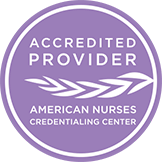Sarah, a Registered Nurse (RN) with five years of experience in a busy medical-surgical unit at a large urban hospital, is known for her excellent clinical skills and compassionate patient care. She recently encountered a situation that required careful consideration of delegation practices, particularly involving peripheral intravenous (IV) therapy.
Scenario:
Sarah's unit was experiencing a particularly hectic shift. The patient census was high, and the complexity of patient needs required efficient task management and delegation. One of Sarah's patients, Mr. Johnson, was admitted with severe dehydration and required immediate IV fluid therapy. At the same time, several other patients needed urgent care.
After doing an initial assessment of Mr. Johnson, Sarah recognized the need to manage her time effectively and decided to delegate the task of starting Mr. Johnson's peripheral IV to Lisa, a Licensed Practical Nurse (LPN) on her team. Lisa has been an LPN for three years and is certified in IV therapy, a skill she frequently utilizes.
Considerations for Delegation:
Sarah's decision to delegate the IV therapy to Lisa involved several critical considerations:
Scope of Practice:
RN Scope: As an RN, Sarah is responsible for the overall assessment, planning, and evaluation of patient care. She can delegate tasks but must ensure they are within the LPN's scope of practice.
LPN Scope: LPNs can perform peripheral IV therapy if they have received the necessary training and certification. Lisa meets these criteria, enabling her to start and manage IVs under RN supervision.
Competence and Experience:
Through her certification and experience, Lisa has demonstrated competence in IV therapy. Sarah has observed Lisa's proficiency in this area, reinforcing her confidence in delegating this task.
Patient Safety and Outcome:
Sarah ensured that delegating the IV therapy would not compromise patient safety. She considered Mr. Johnson's condition and recognized that timely IV therapy was crucial. Given Lisa's skills, Sarah trusted that the task would be performed safely and effectively.
Supervision and Support:
Sarah provided clear instructions to Lisa, outlining the specifics of the IV therapy needed for Mr. Johnson. She remained available for consultation and supervision, ready to step in if complications arose.
Execution:
Lisa approached Mr. Johnson to explain the procedure and ensure his comfort. She skillfully inserted the IV catheter and initiated the fluid therapy per the doctor's orders and Sarah's instructions. Lisa monitored Mr. Johnson for any adverse reactions throughout the process, ensuring the IV therapy progressed smoothly.
Sarah checked in regularly to oversee the procedure, verifying that everything was proceeding according to plan. She praised Lisa for her competence and thanked her for her assistance, reinforcing a collaborative and supportive team environment.
Outcomes:
The delegation of IV therapy to Lisa resulted in several positive outcomes:
Timely Patient Care. Mr. Johnson received the necessary IV fluids promptly, improving his condition and stabilizing his vital signs.
Efficient Workload Management. By delegating the task, Sarah managed her workload more effectively, allowing her to attend to other critical patient needs without delay.
Enhanced Team Collaboration. The successful delegation reinforced trust and collaboration between Sarah and Lisa, promoting a positive working relationship and mutual respect.
Professional Development. Lisa gained further confidence in her IV therapy skills and appreciated Sarah's trust in her, which contributed to her professional growth.
Case Study Conclusion:
This case study highlights the importance of thoughtful delegation in nursing practice. By considering the scope of practice, competence, patient safety, and supervision needs, Sarah successfully delegated IV therapy to Lisa, resulting in improved patient care and effective teamwork. This scenario underscores the critical role of delegation in optimizing nursing workflows and enhancing patient outcomes.






